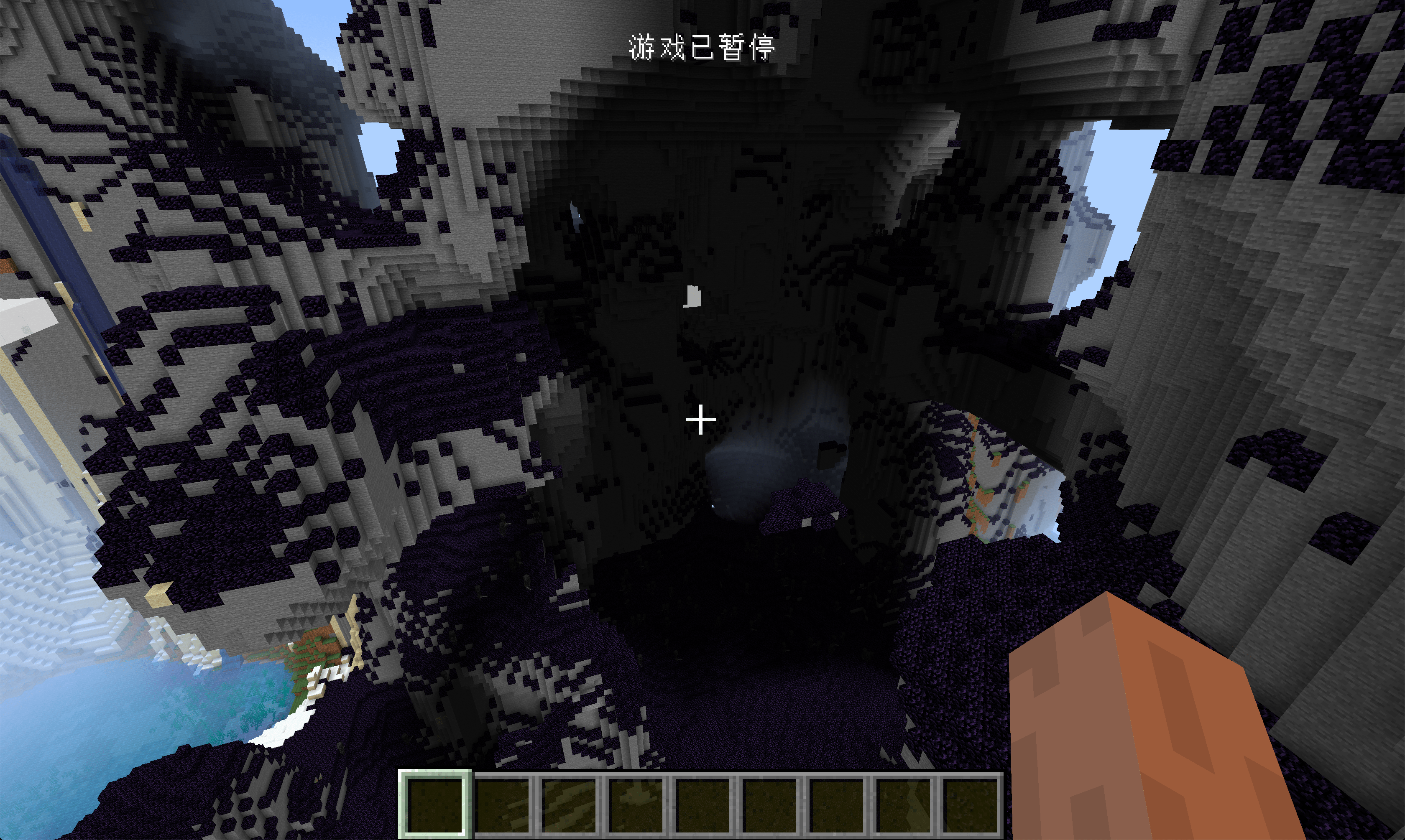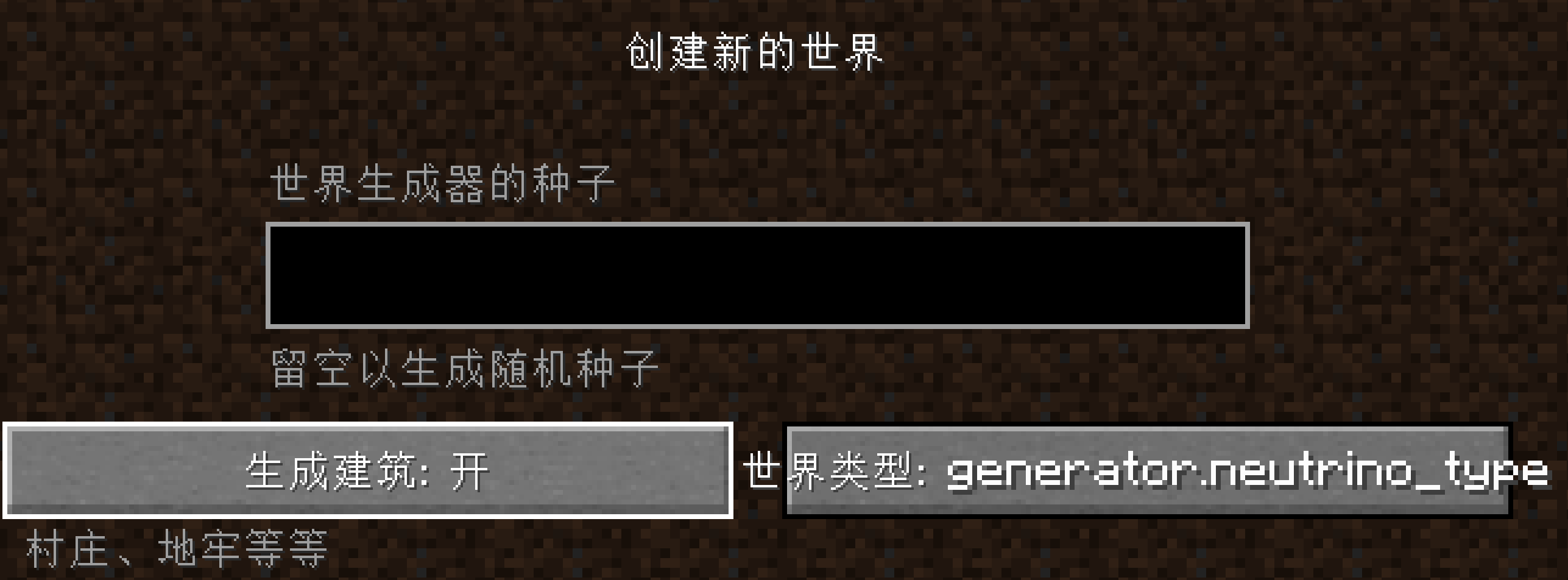自定义生物群系和世界类型
在这节中,我们将来学习如何添加一个自定义的生物群系,
和结构类似,首先我们的新建一个类,继承原版的生物群系。
public class ObsidianBiome extends Biome {
protected ObsidianBiome(Builder biomeBuilder) {
super(biomeBuilder);
this.addFeature(GenerationStage.Decoration.UNDERGROUND_ORES, Feature.ORE.withConfiguration(new OreFeatureConfig(OreFeatureConfig.FillerBlockType.NATURAL_STONE, Blocks.GOLD_ORE.getDefaultState(), 9)).withPlacement(Placement.COUNT_RANGE.configure(new CountRangeConfig(20, 32, 32, 80))));
this.addSpawn(EntityClassification.AMBIENT, new SpawnListEntry(EntityType.WITHER_SKELETON, 30, 5, 10));
DefaultBiomeFeatures.addCarvers(this);
}
}
可以看到这里的内容非常的简单,不过就是给我的的生物群系添加Feature子类的,之前已经写过自然生成的大家对这些方法并不陌生。唯一一个值得说的是DefaultBiomeFeatures,原版在这里定义了一些预先设置好的Feature、Structure、Carvers和Spawn,大家可以直接调用里面自带的方法。
接下来就是注册我们的生物群系
public class BiomeRegistry {
public static final DeferredRegister<Biome> BIOMES = new DeferredRegister<>(ForgeRegistries.BIOMES, "neutrino");
public static RegistryObject<ObsidianBiome> obsidianBiome = BIOMES.register("obsidian_biome", () -> {
return new ObsidianBiome(new Biome.Builder().category(Biome.Category.PLAINS)
.surfaceBuilder(SurfaceBuilder.DEFAULT,
new SurfaceBuilderConfig(Blocks.OBSIDIAN.getDefaultState(), Blocks.STONE.getDefaultState(), Blocks.END_STONE.getDefaultState())
)
.scale(3f)
.downfall(0.5f)
.precipitation(Biome.RainType.SNOW)
.depth(1f)
.temperature(0.7f)
.waterColor(0x0c0a15)
.waterFogColor(0x632ebf)
);
});
}
这里的内容也类似,因为这里的参数过多,很多参数也没发简单的解释,这里就不多加解释为什么了。我建议大家自行参照原版的实现填写内容。
当然别忘了在Mod主类中,将BIOMES注册到Mod总线中。
创建完成之后,接下来就是将我们的生物群系添加到主世界的世界生成中。
@Mod.EventBusSubscriber(bus = Mod.EventBusSubscriber.Bus.MOD)
public class CommonSetupEvent {
@SubscribeEvent
public static void onCommonSetup(FMLCommonSetupEvent event) {
BiomeManager.addBiome(BiomeManager.BiomeType.COOL, new BiomeManager.BiomeEntry(BiomeRegistry.obsidianBiome.get(), 1000));
}
}
这里我们在FMLCommonSetupEvent世界中,调用BiomeManager.addBiome添加了我们的生物群系,BiomeManager.BiomeEntry构造方法的第二个参数是权重,这里我们填的高点让我们的生物群系更容易被找到。
打开游戏寻找一下,应该就能看见我们的生物群系了。

但是寻找生物群系有时候是非常麻烦的事情,我们可以创建一个WorldType来帮助我们调试生物群系。所谓的WorldType就是原版中的默认、超平坦、巨大化等。
当然,创建一个自定义的也非常简单
public class ObsidianWorldType extends WorldType {
public ObsidianWorldType() {
super("neutrino_type");
}
@Override
public ChunkGenerator<?> createChunkGenerator(World world) {
OverworldGenSettings settings = new OverworldGenSettings();
SingleBiomeProvider singleBiomeProvider = new SingleBiomeProvider(new SingleBiomeProviderSettings(world.getWorldInfo()).setBiome(BiomeRegistry.obsidianBiome.get()));
return new OverworldChunkGenerator(world, singleBiomeProvider, settings);
}
}
这里我们直接继承了WorldType类。
它的构造方法里需要填入一个名字,请注意这个名字不能超过16个字符
然后就是他的createChunkGenerator方法,这里需要返回一个ChunkGenerator,因为我们希望能像原版主世界的一样的地形起伏,所以返回的是OverworldChunkGenerator。因为我们只需要生成一种生物群系,所以在这里用了 SingleBiomeProvider(单一生物群系提供器)。还有一个OverworldGenSettings就没什么好讲的了。
创建完成之后,我们只需要在你的主类中,创建一个变量实例化它就行。
@Mod("neutrino")
public class Neutrino {
public static final ObsidianWorldType obsidianWorldType = new ObsidianWorldType();
public Neutrino() {
...代码省略...
此时打开游戏,你应该就能看见新的世界类型了

创建一个存档试试吧。